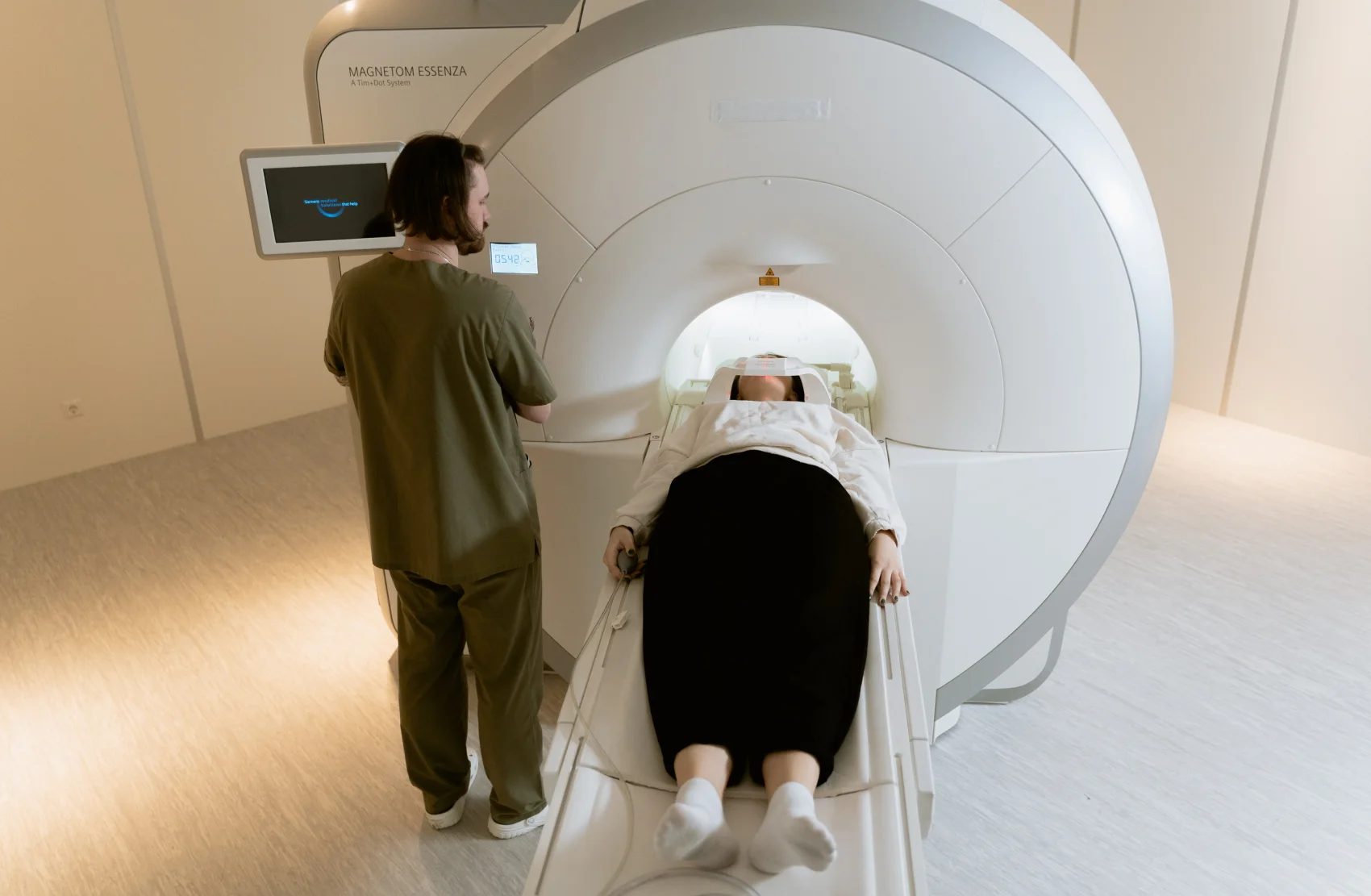
If you have seizures, your doctor may refer you to have an MRI for epilepsy. Magnetic Resonance Imaging (MRI) is one technique used to understand why people might be having seizures. The epilepsy MRI findings might help diagnose the kind of epilepsy you have.
A word on language: People sometimes refer to this as an ‘epilepsy MRI’. This isn’t the correct medical term, but since people often use this language, we’ll be using it in this article for convenience.
An MRI machine is a large device you lie inside of. You might be feeling a little nervous about the scan, but it’s painless and considered safe. If you have any concerns about going for an MRI, talk with your doctor.
MRI machines can be used to perform a wide range of scans, and they’re not just used for epilepsy. But in this article, the focus will be on using MRIs for epilepsy.
Let’s learn more about MRI and epilepsy.
What is an MRI?
Magnetic Resonance Imaging is a medical procedure used to create a 3D image of the inside of any part of a person’s body. It uses a magnetic field and radio waves which can generate a picture of the structure of muscles and organs. MRI may also show how fluids move around the person’s body.
Why am I being offered an epilepsy MRI?
Sometimes epilepsy is caused by specific abnormalities or damage to the brain. The MRI scan may show things like:
- Damage to the brain caused by head injuries
- Brain tumors
- Structural problems
- Issues with how blood flows through vessels in the brain
- Sclerosis - which is when brain tissues hardens
If these kinds of issues show up on the epilepsy MRI findings, it may help your doctor to learn more about why you're having seizures.
An epilepsy MRI scan may also be used if you are going to have brain surgery (for example, to remove a part of the brain that might be causing seizures). The MRI may help the surgeon identify exactly which part of the brain to remove.
Ways to diagnose epilepsy: What’s an EEG?
Does epilepsy show up on MRI scans?
No, not exactly. Epilepsy isn’t something you can ‘see’ in a brain scan. Epilepsy is a seizure disorder - seizures are sudden bursts of electrical activity in the brain, and these can’t be seen in an MRI scan.
However, an MRI scan may help doctors understand some of the possible underlying structural causes of a person’s seizures. For example, it might show a lesion in the brain that’s causing their seizures.
But for many people there is no visible structural cause behind their epilepsy and so the brain scan might come back ‘normal’. In this case, doctors rely on other approaches to identify epilepsy.
Keep learning: Why do people get epilepsy?
Epilepsy MRI vs 'normal' MRI
If you have an MRI coming up to investigate epilepsy, you might be wondering how it compares to other types of MRI scans. While the machine used is the same, the scan often follows a more detailed protocol designed to help identify the potential causes or sources of seizures. MRI specialists use many different techniques to study different illnesses. For epilepsy, common MRI‑based tests may include:
- Functional MRI epilepsy scans
- FLAIR - a technique that helps detect lesions
Preparing for your epilepsy MRI appointment
Going into an MRI machine can be a strange experience. MRI machines are noisy, and you may be given earplugs to wear. The procedure normally lasts between 30 and 60 minutes, and the technician will ask you to keep your head still so that the images are not blurry. This can be a little uncomfortable. If you have claustrophobia, ask the technician about ways to stay calm.
Ask your doctor for specific advice about preparing for your epilepsy MRI appointment. They might suggest things like:
- Tell your doctor and the technician at the hospital if you have any metal implants anywhere in your body - as these can pose serious safety risks during an MRI scan.
- If you find being in small spaces stressful (or have claustrophobia), talk to the technician - they might be able to suggest ways to manage this
- In most cases, you’ll be asked to take your seizure medicine as you usually do, and sleep and eat in your normal way - confirm this with your care team prior to the scan
- Wear comfortable clothes that do not contain any metal fasteners or buttons
- Avoid wearing jewelry, make up or hearing aids
- If at any point during the procedure you feel uncomfortable, there will be a system that lets you communicate with the technician
Is an MRI safe?
So long as precautions are taken (such as reporting metal in the body and not wearing any items containing specific types of metal), research shows they are considered safe for most people. If you have any concerns, speak with your doctor.
What happens after the epilepsy MRI test?
After the test is complete, a radiographer and your neurologist will analyze the epilepsy MRI findings. This information might be used to understand your seizures and help to decide on the best treatment pathway for you.

















